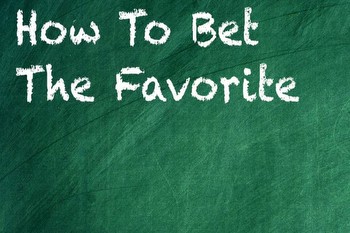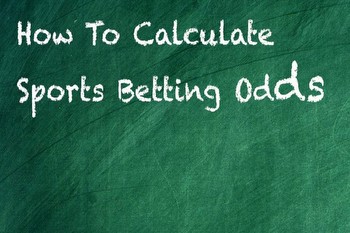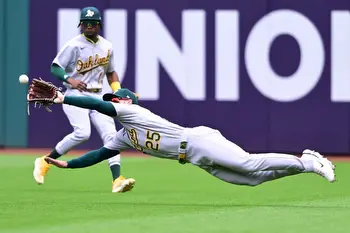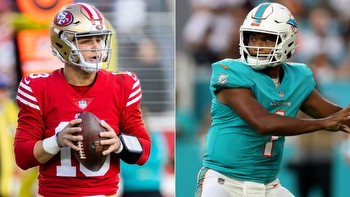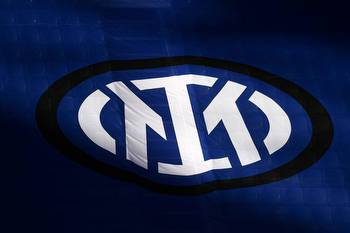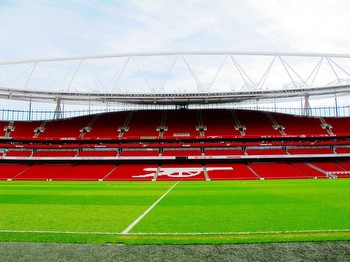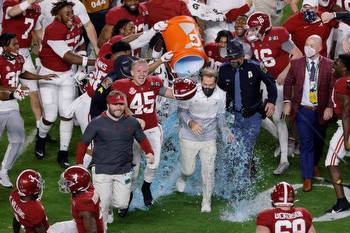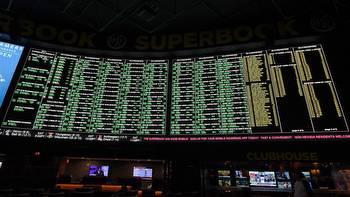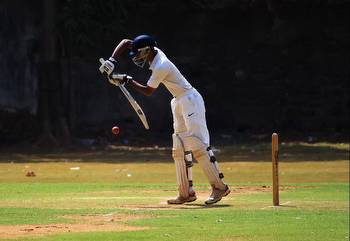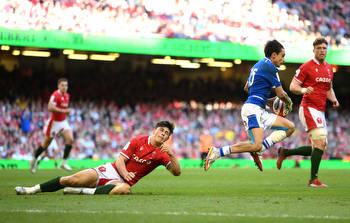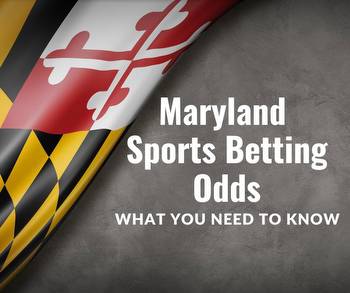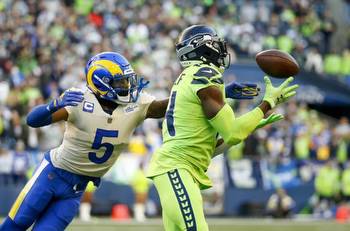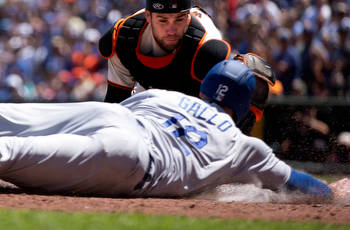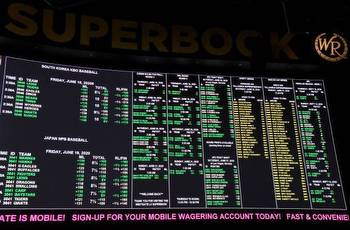What Does The + And - Mean In Sports Betting? - Forbes Betting

Understanding how to read American odds—the “-” and “+”—in online sports betting is vital to ensure you’re getting the best possible value to put money in your pocket.
Here, we will cover reading plus-and-minus odds for moneylines and spreads, with specific betting examples for the major sports.
American Betting Odds Explained
American odds are what you’ll find at the regulated online sportsbooks available in your state. Odds are another way of saying the price for a bet.
Odds are the centerpiece of making online and in-person sports bets. We will break this down by looking at underdogs, favorites, an example of a betting line and also compare it to other odds styles that you may come across during your betting experience.
How to Read American Odds
With American odds, there are two key symbols: The “plus” sign (+) and the “minus” or “negative” symbol (-). These are ubiquitous symbols across the industry in North America.
The “+” and “-” are put in front of odds or lines, indicating the favorites and underdogs. The favorites will be marked with a minus sign, whereas underdogs get the plus sign.
This is the case for all types of bets, including moneylines and point spreads.
When you’re looking at a bet that you’re interested in making, these symbols will give a quick and clear indication as to what outcome the online sportsbook deems more likely.
Pros and Cons of American Odds
While all odds formats show the same thing, though presented differently, there are advantages and disadvantages for American odds.
The American odds are excellent for gauging and calculating payouts quickly, especially if you use a flat $100 wager. The “+” odds will show you what you will win with a $100 wager; the “-” odds show what you’ll need to wager to win $100.
However, if you want to calculate an implied winning probability, you’ll need to rely on fractional odds.
Odds of +200 will show that you’ll win $200 on a $100 bet, but there’s no quick way to determine the implied winning probability. If these odds appeared as fractional odds—2/1—you could quickly solve for the implied winning probability using this formula:
Decimal / (Numerator + Denominator) x 100%
Using the above formula, sports bettors can quickly determine a +200 market has an implied probability of 33.3%. On the flip-side, a -200 market would have an implied probability of 67.7%.
American odds are the default for how betting odds are presented both at online sportsbooks and even during sporting events. It comes down to preference, but familiarizing yourself with American odds is necessary to navigate online sports betting.
American Odds vs. Decimal and Fractional Odds
Let’s compare odds in the plus-and-minus format to the other styles.
No matter what odds system you see or use, they will all represent the same price, just presented or expressed differently.
Using the +200 example above, we know that’s the notation for American odds. The table below illustrates the decimal and fractional odds representation for +200 in American odds.
Decimal odds are not often seen in the North American sports betting scene, although most online sportsbooks will have a feature where you can toggle how odds appear.
With this odds type, you can determine your payout by taking the decimal and multiplying it by your wager. So, if you bet $50, you would receive a total of $150, including the stake.
For fractional odds, these are also used outside of the United States, typically found in the United Kingdom. Also, this is the primary odds type used for betting on horse races.
What Does +200 Mean in Betting?
If you’re scrolling through an online sportsbook and see a bet with a +200 next to it, this indicates that you’ll be wagering on a slight underdog.
These odds can appear for any wager type, but the monetary payout remains the same. Using a $100 wager as an example, if you bet $100 on odds of +200, you will claim $200 on a winning wager.
When the wager settles, your virtual wallet receives $300 total ($100 back from the initial wager plus the additional $200 in profit).
Moneyline & Point Spreads
Moneyline and points spread bets are different, but the odds are most important as they will show what monetary upside you have.
Moneyline Bets
The moneyline wager—who will win the game or contest—is the most straightforward bet type in online sports betting.
When you see a moneyline of +200, this indicates that the team you’re betting on is an underdog. For a favorite, you will always see a “-” sign, as the implied probability is greater than 50%.
When you see this, the best way to think about it is it will show you how much you need to wager to win $100.
For example, if you see odds of -130, you need to wager $130 to win $100.
Point Spreads
Point spreads are a more difficult wager to make, and any odds, both + and -, can appear, regardless of whether the team is a favorite or an underdog.
The goal of a point spread is to try to make the two teams as even as possible, accounting for the advantages and disadvantages of each team.
For example, the Tampa Bay Buccaneers are taking on the Los Angeles Rams. The Rams are two-point favorites. For a spread, the favorite appears as -2 and the underdog Buccaneers as +2.
When betting on point spreads, keep this in mind:
- On “-” point spreads, that team must win by more than the number.
- On “+” point spreads, that team must lose by no more than less than that number.
If the Rams win 24-23, yes, they win the game, but with a -2 point spread, the game will have a score of 23-22 in favor of the Buccaneers in sports betting.
With points spread bets, -110 is a typical line you’d see, but this is different from sport to sport.
If you see points spread betting odds with a “+,” this is something to immediately take note of because “+” betting odds don’t often appear and this could have value.
For example, in the NFL, it’s rare for the points spread betting odds to be anything other than the -105 to -115 range. If there was a point spread with a “+” value, this could be worth looking into due to its scarcity.
How to Calculate and Bet Using American Odds
While moneylines and point spreads come with every sport, contextual differences for these depend on the sport.
For example, with sports like the NBA or NFL, point spread wagers will have the standard point spread betting odds of -110. MLB and NHL utilize a “runline” and “puckline,” respectively, where teams are favored by one-and-a-half with varying odds.
Below, we will provide examples for each popular sport for U.S. sports betting.
NFL Football
The NFL is the most popular sport to bet on in the U.S. today. There are some unique things to keep in mind with NFL betting odds.
Let’s look at a moneyline example.
With these moneylines so close together, this indicates the perceived margin of superiority and inferiority is relatively small.
In the example above, one would have to bet $120 on the Rams to win $100, while betting $100 on the Buccaneers would result in a $110 profit if they won.
While there is no direct correlation between the moneyline and spread, we can assume that the spread is small considering the narrow moneyline gap.
Notice with point spreads that the odds remain the same—this is common practice with NFL betting. The goal of the point spread in NFL betting is to make these teams as even as possible. Thus, the odds are even, too.
In sports betting, -110 is common as the additional -10 acts as a commission for the online sportsbook to take your action.
Even though both betting odds are “-,” you can see that the favorite and underdog are depicted by the -2 and +2.
NBA Basketball
When it comes to NBA betting, the same principles apply here as NFL betting. It’s common to see point spreads similar to the NFL, even with so many points scored.
Though there are parallels between the NBA and the NFL, it’s possible for the NBA to have “+” odds for underdogs. We’ll use an example of that, but keep in mind that -110 is almost always likely to occur.
MLB
Things get a bit different with Major League Baseball, especially compared to the NFL and NBA. The moneyline is the moneyline regardless of sport, but the point spread is where the difference shows.
For baseball, the betting odds on the point spread—known as the runline for MLB betting—are rarely the same. However, you’ll find that the runline is relatively consistent at -1.5.
With MLB betting, 1.5 runs is a big deal, as that could sometimes be more than what an actual team scores. Therefore, the 1.5 runline gets represented differently from team to team and the odds reflect that.
NHL Hockey
Betting odds presented in the NHL are the same as with MLB. In MLB, the point spread is the runline, and in the NHL it’s called the “puckline.”
With the puckline, sometimes bettors will see a spread of 2.5 if a top-tier side is playing a bottom-feeder, with the odds adjusted accordingly. Rarely in the NHL and MLB will bettors see whole number spreads.
Golf
The most common bet type with golf is picking the outright winner from a large field of competitors. In essence, you’re betting on the moneyline for each golfer.
With such large fields of players, even the top favorite could still have a “moneyline” viewed as a massive underdog in other sports.
UFC
There are multiple ways to wager on any sport, including the UFC. However, the most common bet is a moneyline bet in which you pick which fighter will win.
There can be massive discrepancies with this in UFC betting. With this being a physical sport and the potential for it to end with a single punch or submission, +700 betting odds can be looked at differently here compared to the NFL, for example.
Let’s look at a relatively lopsided moneyline in UFC.
Bottom Line
The plus and minus signs in betting are simple, but it can take some time to feel like a normal way of looking at a team’s chances of winning.
American odds essentially give you an implied probability for a game, but in betting the sportsbooks express the percentages in the form of a price. The “+” and “-” give you the cost and potential payout.
American odds, which use the plus and minus symbols, revolve around the $100 bet, but you can wager less or more depending on your confidence level.








